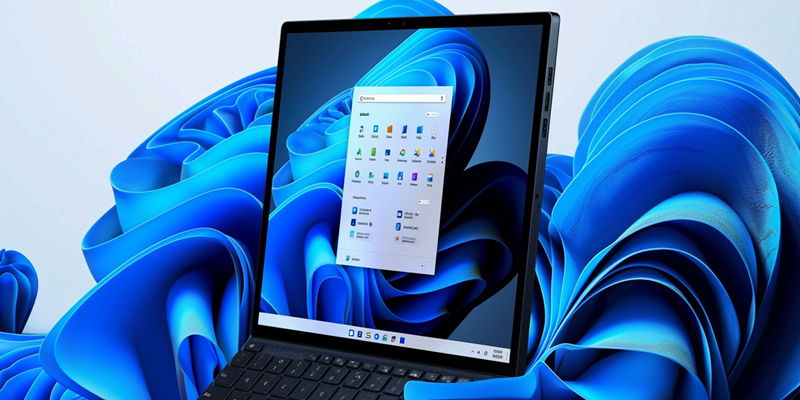The latest beta release of Windows 11, build 22635.3785, marks a significant step forward in addressing the concerns raised by long-time users who were disappointed with the initial release’s omission of several useful features from Windows 10. Microsoft has proactively worked to reintroduce and refine many of these features, aiming to make the operating system more intuitive and user-friendly. This update not only brings back beloved functionalities but also introduces novel adjustments designed to further enhance the user experience.
Enhanced Pinning and Start Menu Improvements
Reviving Pinning Functionality
One of the most notable features reintroduced in the latest beta is the ability to drag icons directly from the Start menu to the taskbar to pin them. This was a beloved feature in Windows 10 that helped users quickly access their most-used apps. While the animation for this action is currently not polished, the core functionality is operational, enabling users to pin their desired icons seamlessly. However, the update still lacks the capability to pin folders by dragging them to the taskbar, a feature that may yet be introduced in future updates.
The All Apps list within the Start menu has also undergone a significant transformation. Previously, users found themselves scrolling endlessly to locate applications. The new layout addresses this by organizing icons into horizontal rows under each letter, akin to a more streamlined alphabetized directory. This change significantly reduces the amount of scrolling needed, making it easier for users to access their apps quickly. Additionally, the Start menu now offers enhanced access to core functionalities through Jump Lists that appear when right-clicking on pinned apps, provided that these apps support Jump Lists. This improvement in accessibility and organization highlights Microsoft’s commitment to refining the Start menu experience.
Taskbar Decluttering and Future Enhancements
Another pivotal area of improvement observed in the beta release revolves around the taskbar. Certain undocumented changes hint at forthcoming features aimed at decluttering the taskbar. For instance, users will soon be able to hide the notification bell and compress the clock by removing the date. These adjustments are particularly beneficial for users with smaller monitors who feel overwhelmed by the multitude of items, such as the search bar, widgets, and the newly added Copilot button. The ability to customize the taskbar layout ensures a cleaner, more organized interface, improving overall user efficiency and satisfaction.
These future adjustments to the taskbar settings are indicative of Microsoft’s dedication to personalizing user experiences. The taskbar, often seen as a central hub for accessing various functionalities, can become cluttered and overwhelming. By offering options to hide certain elements, users can achieve a more minimalistic and distraction-free interface. This is especially crucial for those who utilize smaller screens, as every inch of real estate is valuable. Also, these changes may herald the introduction of additional customizable features, allowing users to tailor the operating system to better suit their individual needs and preferences.
Enhanced Cross-Device Functionality
Seamless Integration with Android Devices
Build 22635.3785 has also made strides in improving cross-device functionality, particularly for Android users. The share menu within this build now includes the capability to send content directly to a phone connected via the Link to Windows app. This enhancement facilitates a more seamless integration between Windows 11 and Android devices, allowing users to effortlessly share files, photos, and other content across platforms. This interoperability between devices is a significant step towards creating a cohesive ecosystem, offering users a more holistic and interconnected technological experience.
The ability to share content between Windows and Android devices without the need for third-party applications exemplifies Microsoft’s vision for an integrated future. Users can now send documents, photos, and other files back and forth with ease, eliminating the often cumbersome process of transferring data between devices. The refinement of the Link to Windows app and its deeper integration into the Windows 11 operating system showcases Microsoft’s intent to streamline workflows and enhance user productivity. As technology continues to evolve, further improvements and additional functionalities in cross-device sharing are anticipated, bolstering Microsoft’s commitment to a unified technological landscape.
A Look Ahead: Microsoft’s Focus on User Feedback
Addressing User Concerns and Future Prospects
The latest beta release of Windows 11, build 22635.3785, represents a major milestone in addressing the issues long-time users had with the initial rollout. When Windows 11 first debuted, it left out several cherished features from Windows 10, causing disappointment among its dedicated user base. Microsoft has been steadfastly working to reintegrate and improve many of these functionalities to make the new operating system more intuitive and user-friendly. This update doesn’t just bring back those beloved features; it also introduces new adjustments aimed at further enhancing the overall user experience. Among the reinstated features, users will find improvements in the taskbar, Start menu, and virtual desktops, which were significantly missed in the first version. Furthermore, Microsoft has not only revived these elements but has also made thoughtful refinements to ensure they meet modern needs. The updated user interface is more seamless and efficient, striving to combine the best of both Windows 10 and 11. This release clearly shows Microsoft’s commitment to listening to its user community and continuously improving its products.

